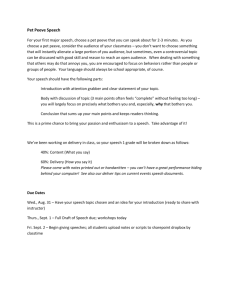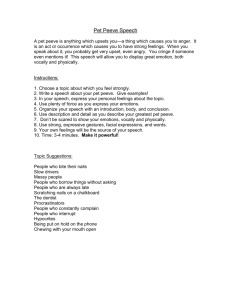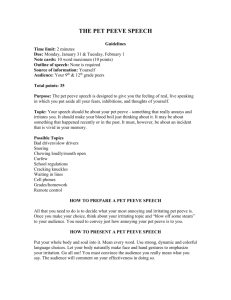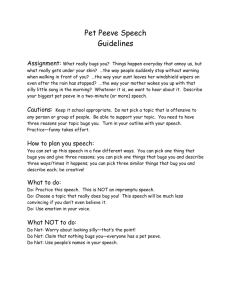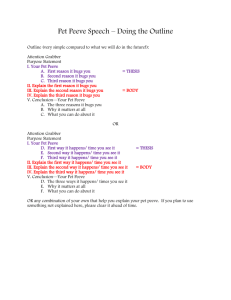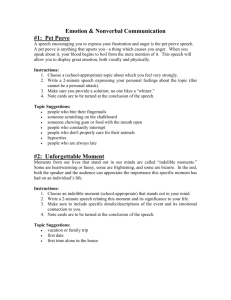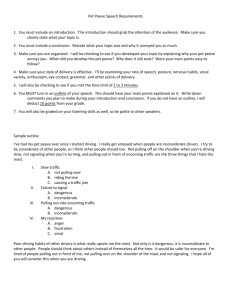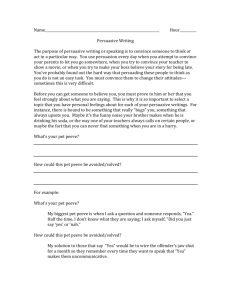Pet Peeve Speech - Coaching Speech
advertisement
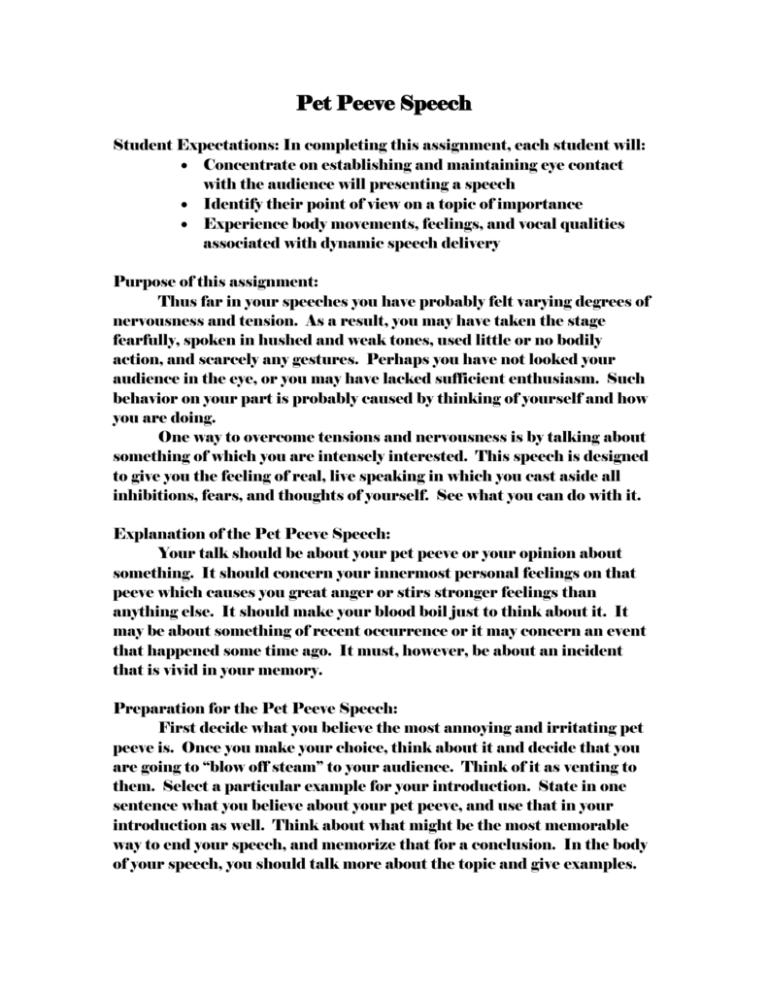
Pet Peeve Speech Student Expectations: In completing this assignment, each student will: Concentrate on establishing and maintaining eye contact with the audience will presenting a speech Identify their point of view on a topic of importance Experience body movements, feelings, and vocal qualities associated with dynamic speech delivery Purpose of this assignment: Thus far in your speeches you have probably felt varying degrees of nervousness and tension. As a result, you may have taken the stage fearfully, spoken in hushed and weak tones, used little or no bodily action, and scarcely any gestures. Perhaps you have not looked your audience in the eye, or you may have lacked sufficient enthusiasm. Such behavior on your part is probably caused by thinking of yourself and how you are doing. One way to overcome tensions and nervousness is by talking about something of which you are intensely interested. This speech is designed to give you the feeling of real, live speaking in which you cast aside all inhibitions, fears, and thoughts of yourself. See what you can do with it. Explanation of the Pet Peeve Speech: Your talk should be about your pet peeve or your opinion about something. It should concern your innermost personal feelings on that peeve which causes you great anger or stirs stronger feelings than anything else. It should make your blood boil just to think about it. It may be about something of recent occurrence or it may concern an event that happened some time ago. It must, however, be about an incident that is vivid in your memory. Preparation for the Pet Peeve Speech: First decide what you believe the most annoying and irritating pet peeve is. Once you make your choice, think about it and decide that you are going to “blow off steam” to your audience. Think of it as venting to them. Select a particular example for your introduction. State in one sentence what you believe about your pet peeve, and use that in your introduction as well. Think about what might be the most memorable way to end your speech, and memorize that for a conclusion. In the body of your speech, you should talk more about the topic and give examples.

